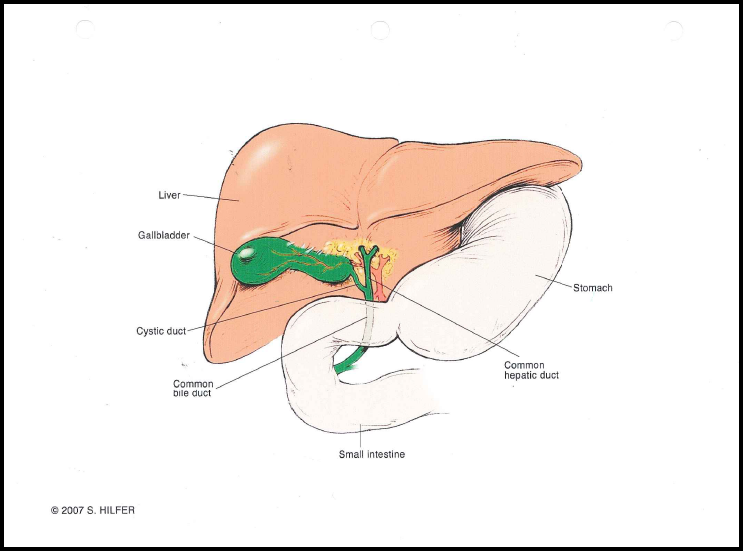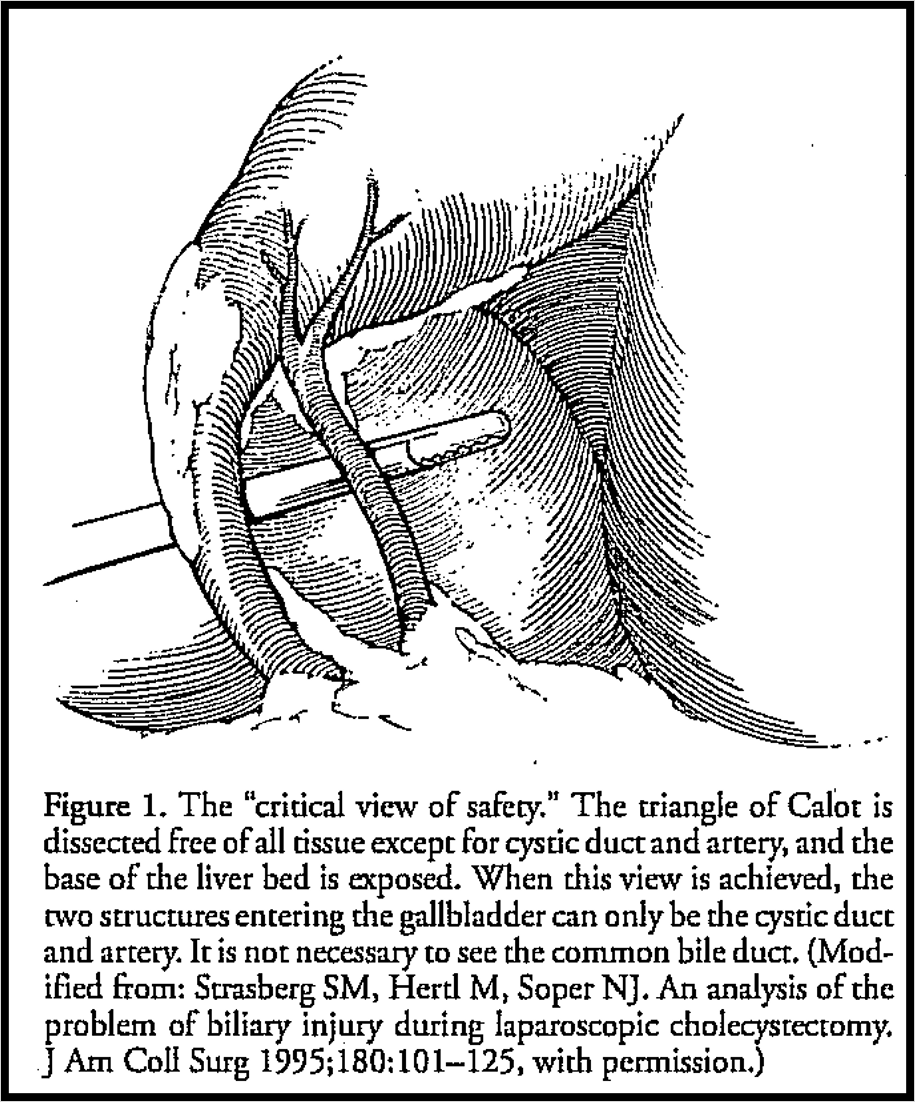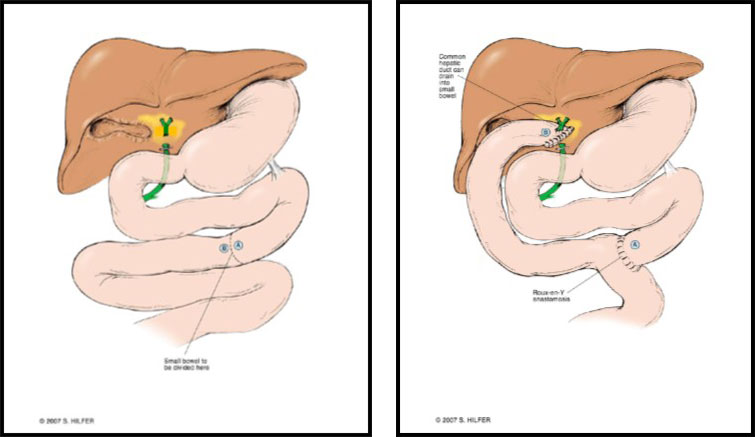

Disclaimer: Any results that the firm may have achieved on behalf of its clients in other matters does not necessarily indicate similar results can be obtained for you. These settlement and verdicts are for general information only.
$500,000 Medical Malpractice Settlement
Client injured by botched gallbladder surgery
One of the most common abdominal surgical procedure done in this country is a laparoscopic cholecystectomy or removal of the gallbadder. Unfortunately, this surgery can lead to patient injury from a well recognized and preventable source.
The gallbladder is an organ in the body located below the liver whose function is to store and release bile, a substance necessary for food digestion. Bile is secreted by the gallbladder through a small vessel called the cystic duct. Bile then flows to the common bile duct where it is carried to the duodenum or bowel.

If a gallbladder gets inflamed (cholecystitis) or develops gallstones (cholelithiasis) it may need to be surgically removed. Traditionally, the procedure was performed by making a open incision allowing the surgeon to enter the abdomen with her hands and tools. For well over 30 years, specially trained doctors have been performing the operation laparoscopically. That is, instead of a large open incision, small incisions are made allowing the introduction of hollow tubes called trocars. The surgeon can then pass cutting and grasping tools, as well as a video camera and light through the trocars. Clear images of the abdominal anatomy appear on a video monitor. This is sometimes referred to as minimally invasive surgery.
To be removed from its perch on the liver bed, the gallbladder must be disconnected from two structures: the cystic artery and the cystic duct. Typically, surgical clips are placed on either end of the cystic duct with the surgeon manipulating scissors to divide or cut the duct between the clips. A similar procedure is carried out on the cystic artery. A key to a safe operation is the unequivocal identification of the anatomy, including the cystic duct. If a carpenter is taught to “measure twice and cut once”, a physician must “confirm before cutting”. If proper technique is not used, a surgeon may mis-identify the common bile duct for the cystic duct, resulting in the clipping and cutting of the common bile duct. Injury to the common bile duct can lead to obstruction, jaundice, pain, infection, and liver damage.

Complications arising by mis-identification are well known and have been discussed at length in the medical literature. In 1995, Dr. Strasberg described in a medical paper the mis- identification problem, its causes, and how to avoid the potentially catastrophic outcome. He educated physicians to follow basic steps to achieve what he called the “Critical View of Safety”. If this view through the laparoscopic monitor is achieved, the surgeon will see two and only two structures emanating from the infundibulum or end of the gallbladder. Those two structures will have to be the cystic duct and cystic artery. After the Critical View of Safety is achieved, it will be safe for the surgeon to clip and cut each structure and remove the gallbadder. Dr. Strasber outlined the basic steps necessary for a safe dissection.
Our client was informed she needed removal of her gallbladder due to inflammation. She underwent a laparoscopic procedure at the local hospital in Orangeburg, South Carolina. Her common bile duct was clipped and cut through completely. A review of the operative note revealed no evidence the surgeon followed basic steps to achieve the Critical View of Safety. In deposition, the surgeon could give no explanation why the mis-identification occurred. The surgeon could identify no conditions that would have impaired his ability to unequivocally identify the anatomy correct. The injury required transfer to a higher level of care at the Medical University of South Carolina hospital in Charleston. There, the client was forced to under a major abdominal surgery called a hepaticojejunostomy, where the bowel was cut through, a free limb was lifted up and attached to the severed bile duct, and the cut end of the bowel was reconnected to another portion of bowel.

The Client will need to follow up for the rest of her life for yearly evaluations with her surgeon to make sure the anastomoses or connections created during the repair surgery do not stricture or narrow done. Obstruction could lead to liver failure. So far, the client is doing well.
Kassel McVey, Attorneys at Law, brought a lawsuit against the hospital claiming injury resulting from the negligent surgical procedure. The case was settled at mediation for $500,000.00.
Personal Injury Lawyers 1330 Laurel Street Columbia, SC 29201 Phone: 803-256-4242
Mailing Address
Post Office Box 1476
Columbia, South Carolina 29202
Fax: (803) 256-1952
Copyright © 2023 John D. Kassel, Attorney at Law, LLC. All rights reserved. Privacy Policy I Terms of Service | Disclaimer
This website is designed for general information only. The information should not be construed to constitute formal legal advice or the formation of a lawyer/client relationship. The results and testimonials listed on this website are specific to the facts and legal circumstances of specific cases and should not be used to form an expectation that the same results could be obtained for other clients in similar matters. This list is not a description or characterization of the quality of the firm's representation, it is not intended to compare one attorney's work to another and is in no way a guarantee of a specific result for your case.

